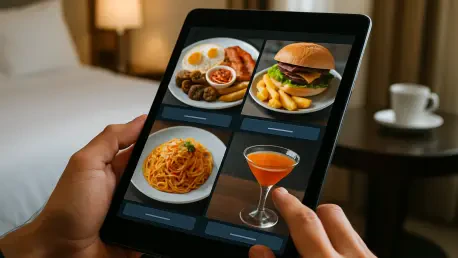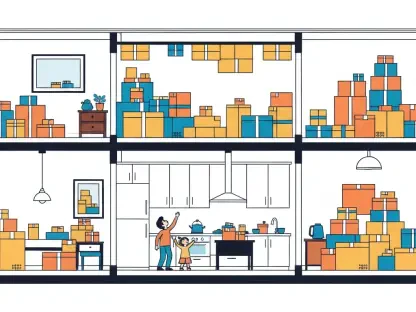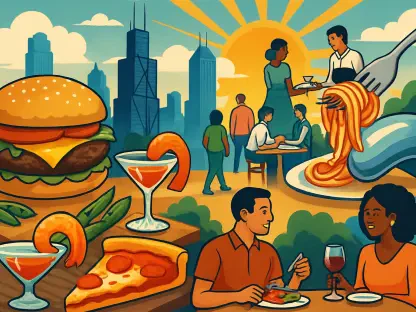Imagine a hotel guest arriving after a long journey, eager to unwind with a meal, only to face a slow, cumbersome ordering process that dampens their experience from the start, setting a negative tone for their entire stay. In an era where seamless digital interactions are the norm across industries, the hospitality sector faces mounting pressure to adapt or risk losing ground. Digital food and beverage (F&B) ordering platforms have emerged as a game-changer, transforming how hotels meet guest needs while driving operational efficiency. No longer just a luxury, these systems are fast becoming a baseline expectation for travelers who demand speed, convenience, and personalized service. As budgets for the upcoming year are planned, hotel leaders must recognize the strategic importance of investing in this technology to stay competitive. This shift isn’t merely about keeping up with trends; it’s about redefining guest satisfaction and unlocking new revenue streams in a rapidly evolving market.
The Strategic Imperative of Digital Solutions
Guest Expectations in a Digital Age
In today’s hospitality landscape, guests arrive with an ingrained expectation for digital convenience, shaped by their daily interactions with apps for everything from ride-sharing to food delivery. Hotels that fail to offer intuitive digital F&B ordering risk frustrating travelers who value speed and autonomy in their service experiences. These platforms allow guests to browse menus, customize orders, and pay directly from their mobile devices, eliminating the need for lengthy phone calls or waiting for staff. Beyond mere convenience, this technology caters to a growing demand for contactless options, a preference that has only intensified in recent years. By integrating such systems, hotels can meet these expectations head-on, ensuring that a guest’s first interaction with their services is smooth and modern. Failure to adapt to this digital norm could result in negative feedback and diminished loyalty, as travelers increasingly choose properties that prioritize tech-driven ease over outdated processes.
The impact of meeting these expectations extends far beyond initial impressions. Digital F&B platforms enable hotels to personalize offerings through data insights, suggesting add-ons or promotions based on past orders, which can significantly enhance the guest experience. This tailored approach not only boosts satisfaction but also fosters a sense of being valued, encouraging repeat visits. Moreover, the ability to order at any time—whether from the poolside or late at night—removes traditional barriers to service access, making guests more likely to spend. Hotels that embrace this technology position themselves as forward-thinking, aligning with the broader societal shift toward instant, on-demand services. This alignment is critical as younger demographics, accustomed to digital-first interactions, become a larger share of the travel market. Ignoring this trend risks alienating a key customer base, while adopting it can turn a basic service into a competitive differentiator.
Operational Gains Through Technology
Digital F&B ordering doesn’t just benefit guests; it revolutionizes hotel operations by streamlining processes that have long been manual and time-intensive. By integrating directly with kitchen point-of-sale (POS) systems, these platforms ensure orders are transmitted instantly, cutting down on errors and wait times that frustrate both staff and customers. This efficiency translates to faster service delivery, with data showing that some hotels have reduced order times by over 10 minutes per transaction. Staff are freed from repetitive tasks like taking phone orders, allowing them to focus on delivering genuine hospitality. The result is a workforce that’s more engaged and less burdened by administrative overhead, which can improve overall morale and service quality. For hotel managers, this operational shift is a clear path to optimizing labor costs without sacrificing guest satisfaction.
Beyond immediate efficiency, the operational benefits of digital ordering include powerful data analytics that help refine business strategies. Real-time reporting on menu performance and pricing trends enables hotels to adjust offerings dynamically, ensuring maximum profitability. For instance, identifying underperforming items or peak ordering times can guide inventory management and staffing decisions, reducing waste and overstaffing. Additionally, the automation of upselling through digital menus—prompting guests to add sides or upgrades—has been shown to increase average transaction values by 20 to 40% in some cases. This isn’t just about cutting costs; it’s about creating a smarter, more responsive operation that can adapt to demand fluctuations. Hotels that leverage these tools gain a significant edge, turning routine F&B services into a well-oiled machine that supports both guest needs and financial goals.
Building the Business Case for Investment
Financial Returns and Revenue Growth
When considering investments for the period from now through 2027, hotel executives must view digital F&B ordering platforms not as an expense but as a potent revenue driver. The financial returns are compelling, with many properties reporting substantial increases in per-guest spending due to the ease of ordering and strategic upselling features embedded in these systems. Unlike traditional methods, digital menus can suggest complementary items at the point of purchase, subtly encouraging higher spends without seeming intrusive. This capability directly boosts per-room income, a critical metric for profitability in the hospitality sector. Additionally, the reduction in order processing time means more transactions can be handled during peak periods, further amplifying revenue potential. For stakeholders, these tangible financial outcomes make a strong argument for prioritizing such technology in upcoming budgets.
Equally important is the long-term financial stability that digital F&B systems offer through improved guest retention. Satisfied guests are more likely to leave positive reviews, which drive bookings in an industry where online reputation is paramount. A seamless ordering experience can turn a one-time visitor into a loyal patron, creating a steady stream of repeat business that reduces reliance on costly marketing to attract new customers. Furthermore, the data generated by these platforms provides insights into spending patterns, enabling hotels to craft targeted promotions that maximize returns. This isn’t merely about short-term gains; it’s about building a sustainable revenue model that withstands market shifts. Hotels that invest now stand to reap compounded benefits over time, positioning themselves as leaders in a sector where guest experience and financial performance are increasingly intertwined.
Choosing the Right Platform for Success
Selecting an effective digital F&B ordering platform requires a focus on features that align with both current operations and future growth. A critical factor is proven return on investment (ROI), as the chosen system must deliver measurable financial benefits to justify the expenditure. Compatibility with existing property management systems (PMS) and POS setups is essential to avoid disruptive overhauls, ensuring a smooth transition for staff and guests alike. User-friendly interfaces are non-negotiable, as clunky or confusing designs can deter adoption and negate the technology’s purpose. Scalability also matters—hotels need a solution that can evolve with their needs, whether expanding to new properties or integrating additional services. Real-time reporting capabilities further enhance value, offering actionable insights for menu optimization and pricing strategies that keep operations agile.
Beyond technical specifications, the right platform should support the hotel’s broader goals of enhancing guest satisfaction and staff efficiency. This means looking for systems that offer robust support and training to minimize learning curves for employees, ensuring quick implementation. Integration of feedback mechanisms within the platform can also provide direct input from guests, allowing for continuous improvement of the F&B experience. When presenting this investment to decision-makers, the emphasis should be on how the technology transforms operational bottlenecks into opportunities for growth. Highlighting case studies or industry benchmarks can strengthen the case, showing how similar properties have thrived after adoption. Ultimately, the selection process is about finding a partner in technology that not only meets today’s demands but also anticipates tomorrow’s challenges, securing a competitive edge for years to come.
Reflecting on a Tech-Driven Path Forward
Looking back, the hospitality industry has been at a crossroads where embracing digital F&B ordering became a defining moment for many hotels. Those who adopted these platforms early saw remarkable strides in guest satisfaction, with streamlined services that left lasting impressions. Revenue growth has been a consistent outcome, as upselling and accessibility drove higher spends, while operational efficiencies reduced costs and improved staff focus. The journey showed that technology isn’t just a tool but a cornerstone of modern hospitality. For hotels that hesitated, the gap with competitors widened, underscoring the urgency of adaptation. Moving forward, the lesson is clear: investing in scalable, integrated digital solutions is the way to ensure resilience. Hotel leaders are encouraged to assess their current systems, explore proven platforms, and prioritize this technology in their strategies, knowing that such steps will shape their success in an ever-evolving market.









